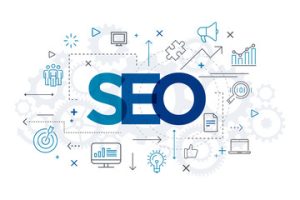Every search begins with a question, often unspoken. SEO in Boise has grown beyond keywords into a complex ecosystem of strategy, behavior, and technology. It determines whether content reaches its audience or disappears into obscurity. Modern SEO is no longer about shortcuts—it is about creating relevance that resonates with humans and algorithms alike.

User intent is now at the center of search optimization. Understanding why someone clicks a link is as crucial as the words they type. Algorithms have evolved to interpret context, not just text. Success lies in predicting needs before they are expressed.
Content structure has become a hidden pillar of visibility. Long-form articles, interconnected pages, and topic clusters provide context for search engines. Each internal link strengthens the narrative of authority. Proper architecture guides both crawlers and readers through a seamless journey.
Voice search has rewritten the rules for discovery. Conversational queries are replacing rigid keyword patterns. SEO now requires anticipating natural speech and question-based searches. Brands that adapt gain visibility in new, unscripted spaces.
Technical SEO underpins every modern strategy. Fast loading times, mobile optimization, and secure connections influence rankings more than ever. Search engines favor sites that perform flawlessly under real-world conditions. Behind every polished interface lies meticulous backend engineering.
Rich media content influences visibility in subtle ways. Videos, interactive charts, and images engage users while signaling relevance to algorithms. Engagement metrics now affect rank alongside textual quality. Multimedia becomes both a storytelling tool and a ranking lever.
The rise of AI has transformed keyword research. Predictive tools analyze emerging trends and suggest untapped opportunities. SEO strategy now blends data-driven insights with human creativity. Anticipating demand becomes as important as responding to it.
Backlinks remain a cornerstone, but quality has overtaken quantity. Partnerships, authoritative mentions, and contextually relevant links carry more weight than mass submissions. SEO today is about creating networks of trust rather than artificial boosts. Influence is earned, not bought.
Local SEO has shifted to hyper-specific targeting. Proximity, intent, and reputation now define visibility in neighborhoods and communities. Maps, directories, and localized content all converge to create presence. For small businesses, mastering local signals can mean the difference between discovery and invisibility.
Mobile-first indexing has turned optimization into an ongoing process. Devices of varying sizes, capabilities, and connection speeds require adaptive design. A single unoptimized element can hurt rankings and user experience. Mobile readiness has become the foundation for competitive visibility.
The psychology of search impacts how SEO is implemented. Users decide trust within seconds based on layout, content clarity, and speed. Algorithms interpret engagement as a signal of authority. Optimizing for humans has become inseparable from optimizing for machines.
Content freshness signals vitality to search engines. Regular updates, revisions, and expansions of existing material keep pages relevant. Stagnant content loses authority over time, no matter how well-written it once was. Continuous maintenance becomes an invisible investment in longevity.
Schema markup clarifies intent and structure for search engines. It communicates metadata that improves rich results and snippets. Proper implementation increases visibility without altering user experience. Structured data bridges the gap between human language and machine interpretation.
Search engine algorithms now reward expertise and trustworthiness. Demonstrating credibility through qualifications, citations, and testimonials strengthens rankings. Authority is no longer implicit—it must be proven digitally. Reliable sources dominate search visibility.
User experience metrics have become ranking signals. Bounce rate, dwell time, and scroll depth influence how content is valued. Sites that prioritize navigation, readability, and accessibility are rewarded. SEO has become a measure of satisfaction, not just discovery.
Content strategy now requires anticipating micro-moments. Short, actionable information meets user needs instantly, especially on mobile. Quick answers improve engagement and brand recall. Optimizing for immediacy creates competitive advantage.
Long-tail keywords provide targeted reach. They capture specific queries that reflect readiness to act or purchase. Though smaller in volume, they often convert more efficiently than broad terms. Precision targeting is now as important as visibility.
Algorithm updates continue to redefine SEO practices. Staying informed requires monitoring, analysis, and adaptive implementation. Static strategies fail to survive in dynamic environments. Agility has become a hidden advantage in digital competition.
Page experience now influences both behavior and rank. Layout shifts, interactivity, and visual stability affect perception. Smooth, predictable interfaces increase trust and engagement. SEO now intersects directly with design psychology.
Content pruning has emerged as a strategic practice. Removing outdated, underperforming, or redundant pages strengthens overall domain authority. Clean digital architecture signals value to search engines. Less clutter often improves overall rankings.
Social signals subtly reinforce SEO. Shares, mentions, and engagement amplify reach and indicate relevance. While not primary ranking factors, they create pathways for discovery and backlinks. Social visibility complements organic performance.
The rise of semantic search has changed content creation. Topics must be covered holistically rather than through repetitive keyword stuffing. Algorithms now understand context, synonyms, and related concepts. Depth of coverage has replaced superficial keyword focus.
Internal linking strategies now function as narrative guides. They distribute authority, maintain crawl efficiency, and improve user navigation. Links create a web of relevance that both machines and humans appreciate. Thoughtful connectivity strengthens domain coherence.
Conversion optimization intersects with SEO more than ever. Visibility alone is insufficient without action-driven pages. CTAs, forms, and lead generation integrate seamlessly into content strategy. SEO now drives not just attention, but measurable outcomes.
The environmental context of search is increasingly important. Sustainable practices, ethical transparency, and social responsibility influence engagement and trust. Search behavior reflects growing consciousness. Content aligned with values performs better organically.
Predictive SEO anticipates user intent before it is fully articulated. AI-driven tools analyze behavior, seasonality, and emerging trends. Marketers can position content proactively rather than reactively. Anticipation creates both visibility and advantage.
Search performance analytics inform continuous improvement. Click-through rates, impressions, and engagement guide content refinement. Real-time monitoring allows rapid iteration. Data-driven decisions optimize both visibility and impact.
Personalized search results emphasize user history and preferences. Tailored content experiences affect engagement and ranking indirectly. Understanding audience behavior allows for fine-tuned content delivery. Personalization strengthens relevance in competitive niches.
The integration of AI writing and curation tools accelerates content production. Quality must remain high while efficiency grows. SEO professionals now balance automation with editorial judgment. Intelligent creation ensures that speed does not compromise authority.
Page speed remains a critical factor. Slow load times reduce engagement and lower ranking potential. Optimization at the technical and content level ensures fast, smooth experiences. Speed reflects both efficiency and professionalism in digital presence.
Interactive content enhances user engagement. Quizzes, calculators, and polls keep visitors actively participating. Engagement signals are measured by algorithms, rewarding dynamic pages. Interactivity turns passive consumption into meaningful connection.
The evolution of link building favors relevance and authenticity. Contextual links from authoritative sources outperform mass submissions. Relationships now define digital credibility. Collaboration drives both traffic and trust.
Featured snippets provide zero-click opportunities for visibility. Optimizing for concise, informative answers captures immediate attention. Even without site visits, authority is established. Snippets represent the intersection of content quality and strategic formatting.
Long-form storytelling improves dwell time and reinforces authority. Comprehensive content meets user needs while establishing depth of knowledge. Extended engagement signals relevance to search engines. Detailed narratives outperform superficial content in competitive searches.
Algorithmic intelligence now measures sentiment and clarity. Positive, helpful, and clear content aligns better with user behavior. Search engines reward experience quality alongside relevance. Emotional resonance complements technical precision.
Local SEO continues to evolve with voice search and map integration. Proximity, reviews, and mobile performance define hyper-local visibility. Businesses that master these signals gain measurable advantage. Local relevance is as crucial as overall domain authority.
Evergreen content sustains organic performance over years. Timeless guides, tutorials, and insights continue to attract traffic without constant reinvention. Maintaining relevance while minimizing updates maximizes ROI. Evergreen material forms the backbone of durable SEO strategy.
SEO has grown into a multidisciplinary field. It combines analytics, psychology, design, and content strategy into a cohesive effort. Professionals must think holistically rather than in isolated tactics. Visibility is now a reflection of thoughtful orchestration.
Ethical SEO emphasizes transparency and user trust. Practices that mislead or manipulate are penalized increasingly by sophisticated algorithms. Long-term strategy prioritizes integrity over shortcuts. Ethical alignment ensures both sustainability and performance.
The final layer of modern SEO is adaptability. Search trends, algorithm changes, and user behavior shift continuously. Continuous learning and adjustment define mastery. SEO is a living system, thriving only when nurtured strategically.
The hidden strength of SEO lies in its silent influence. Every search, click, and interaction is shaped by its principles. It connects content to curiosity and commerce to need. Mastery of SEO is mastery of connection, visibility, and digital relevance.
